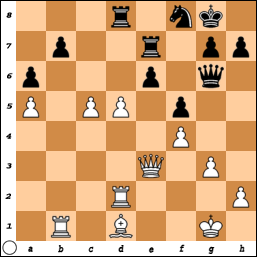Chess Videos
Chess Tools
Other
Book Review: Chess Success - Planning After the Opening by Neil McDonald
| Ideal audience: Players below master-strength | ||
| Pros: well-written, sections on the isolated queen pawn and hedgehog pawn structures are especially good. | ||
| Cons: first two chapters lack cohesion, but the individual games are still instructive. | ||
| Rating: 4 out of 5 pawns | ||
| "If your philosophy is 'put pieces on good squares and don't worry about an overall plan or tactics!' you are in effect playing Russian Roulette. Sooner or later someone will be mopping bits of brain off the chess board, which is bad news even for someone who doesn't like to think too much." |
In the introduction to Chess Success: Planning After the Opening, Neil McDonald explains that his book explores the relationship between middle-game planning and pawn structure. To do so, McDonald discusses typical middlegame pawn structures (isolated queen pawn, hedgehog formation, etc.) and illustrates how they shape middlegame planning. In the later chapters, McDonald accomplishes a difficult task: he elucidates the importance of subtle aspects of pawn structure. The book is filled with the kind of discussion that can really improve one's play; McDonald explains concepts that generally elude the average player.
My favorite aspect of McDonald's book is the way the start of each chapter dissects a key pawn structure. Often a diagram of the pawn skeleton is given along with a brief discussion of each side's basic ideas. After this summary, McDonald includes games that illustrate the central middlegame ideas arising from the pawn structure on which the chapter focuses. This is where McDonald shines, as he has a talent for annotation. During critical parts of the illustrative games, McDonald's move-by-move comments manage to describe (with words!) the reasoning behind various ideas and moves, rather than drowning the reader with analysis variations.
 |
| Lasker - Steinitz |
"Dr. Jekyll and Mr. Steinitz", McDonald's chapter on the isolated queen pawn (IQP), is especially good. He uses classic examples to illustrate playing both with and against the IQP. Best of all, he includes a discussion of a pawn structure that often evolves from the IQP structure: the hanging pawn duo. McDonald's discussion opens with the classic game Lasker - Steinitz, World Championship, 1894. Lasker plays with the IQP beautifully, transforming it into a hanging pawn duo before winning with the crushing breakthrough 34.d5!
While some readers might complain that countless other volumes have examined this classic game, it's only fair to point out that McDonald includes a number of more obscure, but no less instructive, examples. Furthermore, McDonald's commentary on Lasker - Steinitz, as well as his discussion of the other games in the book, is what makes his work so refreshing. Rather than providing reams of analysis, McDonald gives clear descriptions of critical, yet subtle, middlegame ideas.
With this collection of well-chosen and entertainingly annotated games, Neil McDonald fills a void in middlegame literature. Reading his book improved my grasp of middlegame play, and it will probably improve yours.
You can discuss this review as well as share your thoughts about the book here




